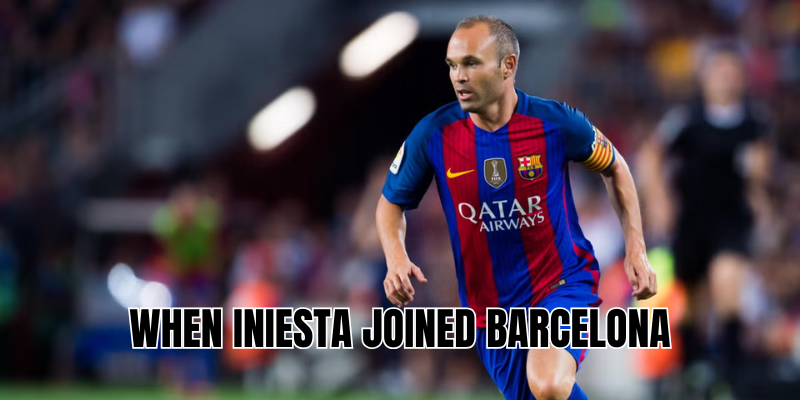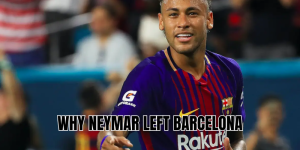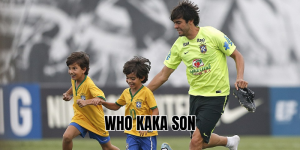From a dusty provincial pitch in Castilla-La Mancha to the hallowed halls of La Masia, Andrés Iniesta’s journey is one of quiet dreams and eventual legend. When Iniesta joined Barcelona, he was only 12 years old, leaving home to seize a chance few ever get. What began as a hopeful teenager’s move turned into a career that defined an era. In this article, QuraGoal will take you through the details: the youth signing, his climb into the first team, and how that decision shaped one of football’s great legacies.
Early life and the move to La Masia
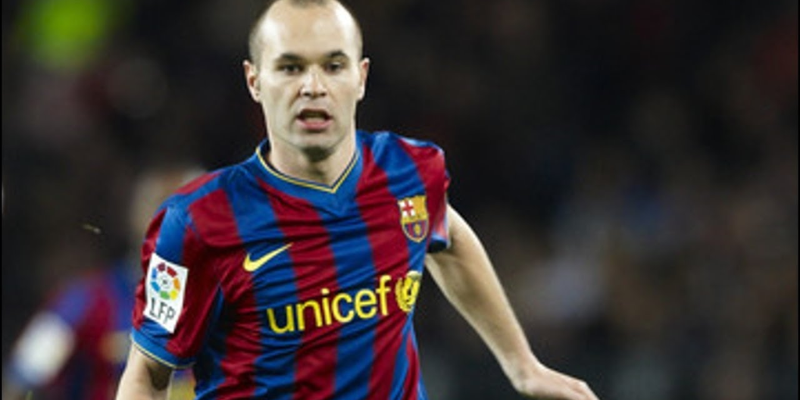
Andrés Iniesta Luján was born on 11 May 1984 in the small village of Fuentealbilla, in the province of Albacete, Spain. He showed football talent early, playing for his local youth sides and later joining the youth setup at Albacete Balompié. By the age of 12, he was already turning heads beyond his local region.
In September 1996, Iniesta officially joined Barcelona’s famed youth academy, La Masia. That moment marks when Iniesta joined Barcelona. At age 12, he left his home environment to enroll in La Masia, beginning the long path from promising cadet to future world-class midfielder. This move required sacrifice: adjusting to new surroundings, distancing, and proving himself among Spain’s brightest young talents.
La Masia’s structure gave him technical training, tactical education, and immersion in Barcelona’s footballing philosophy—possession, intelligence, spatial awareness—all of which became essential in his development.
Progressing through Barcelona’s youth to B team
Over the next few years, Iniesta rose steadily through the age groups at La Masia. Coaches and scouts recognized his composure, ball control, and vision. He was not the flashiest in terms of physicality, but his football IQ was advanced for his age.
By the 2000–01 season, Iniesta was playing with Barcelona B, the club’s reserve side., he made 49 appearances and scored 5 goals in Segunda División B and affiliated competitions. During these years, he alternated between B team duties and occasional training stints with the first team.
His performances in the reserves, combined with the club’s philosophy of promoting youth, set the foundation for his senior breakthrough. He was already deeply acquainted with Barcelona’s style long before his first-team debut.
Debut for the first team and becoming a fixture
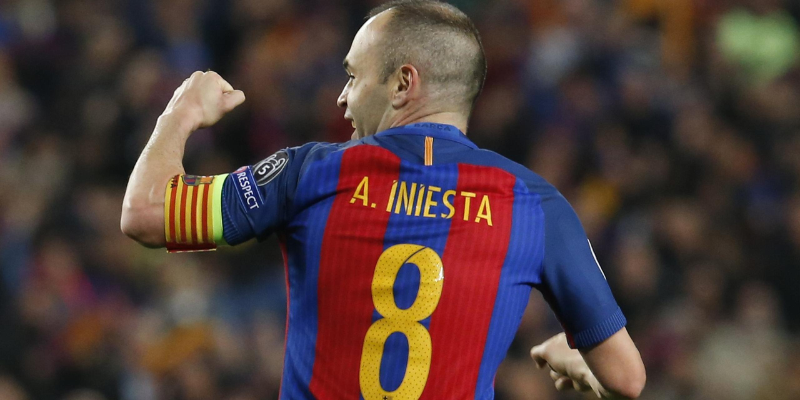
First-team debut
On 29 October 2002, Iniesta made his first-team debut for Barcelona in a UEFA Champions League group stage match against Club Brugge. He came on as a substitute in what became a 1–0 victory. This match symbolized the beginning of a new chapter: the first steps in a career that would define modern Barça.
Soon after, in December 2002, he made his La Liga debut—in that same season, he balanced appearances between the reserve side and the senior team. Gradually, his involvement with the first team increased.
Breakthrough and regular role
Iniesta’s role expanded significantly in the 2004–05 season, under manager Frank Rijkaard. That year, he played in 37 of 38 league matches, helping Barcelona secure the La Liga title. He scored two important goals that season. It was effectively the moment when Iniesta cemented his place in the squad.
Over the next seasons, Iniesta evolved into a core component alongside players like Xavi and Sergio Busquets. His ability to retain the ball, drift into gaps, and combine short passes turned him into a midfield fulcrum.
When Xavi was injured in 2005–06, Iniesta had opportunities to start regularly—he seized them with poise. His versatility allowed him to adapt to multiple roles: deeper, more advanced, even drifting wide when needed.
The significance of when Iniesta joined Barcelona
That moment in 1996 when a 12-year-old Andrés Iniesta moved to Barcelona set into motion a chain of events that transformed Spanish and world football. Several reasons highlight its significance:
- La Masia imprint: Being integrated into La Masia’s system from a young age meant Iniesta internalized Barcelona’s tactical and technical philosophy early.
- Longevity and loyalty: He stayed at Barcelona until 2018, a 22-year association from joining youth to final first-team days.
- Era-defining partnership: His midfield link-ups with Xavi and Busquets powered Barcelona and Spain’s dominance, especially. Trophy haul and legacy: With Barcelona, Iniesta won nine La Liga titles, four UEFA Champions Leagues, multiple domestic cups, and global club trophies—becoming one of the greatest players ever associated with the club.
- Symbol of development pathway: His story is a template for La Masia’s success: youth talent nurtured to world-class status.
Thus, when Iniesta joined Barcelona is not merely a date—it’s the seed moment for one of football’s most enduring legacies.
Career milestones and statistical highlights
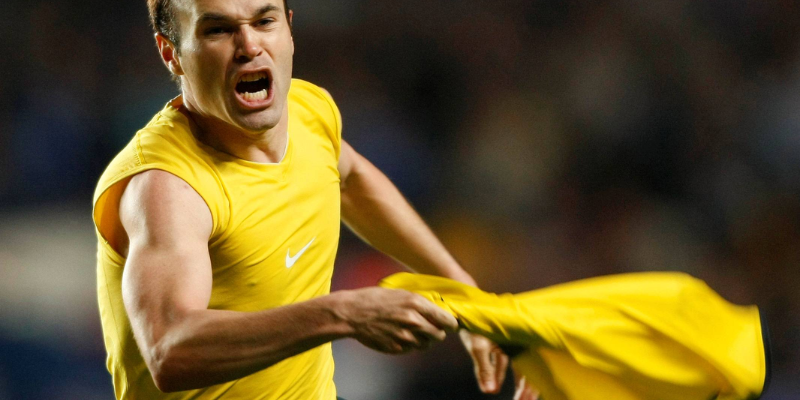
To appreciate how far that young signing led, let’s chart key career moments and data.
Milestones
- Youth signing: September 1996, aged 12.
- First-team debut: 29 October 2002 (Champions League vs Club Brugge).
- La Liga debut: December 2002, in the 2002–03 season.
- Full integration: 2004–05 season, playing nearly every match.
- Contract renewal & lifetime contract: In December 2013 he extended his deal, and in 2017 Barcelona declared a lifetime contract.
- Departure: In 2018, he left for Vissel Kobe in Japan, closing a defining chapter.
Statistics
- Appearances for Barcelona first team: 674 matches across all competitions.
- Goals for Barça: Around 57 goals (various sources).
- Titles won:
- – 9 × La Liga
- – 6 × Copa del Rey
- – 4 × UEFA Champions League
- – Multiple Su, and European Super Cups
- National team: 131 caps for Spain, 13 goals.
- Club career span at Barcelona: 2002 to 2018.
These numbers reflect not just quantity but consistent quality at the highest level—an arc few players match.
Challenges, evolution, and legacy
Adapting through eras
Over his Barcelona tenure, football evolved—rival tactics, evolving lineups, and different managers required Iniesta to adapt. From Rijkaard’s rotation style to Pep Guardiola’s hyper-possession, Tito Vilanova, Luis Enrique, and beyond, Iniesta remained a constant. His role evolved: sometimes deeper, sometimes more attacking, at times wearing the captain’s armband.
Overcoming criticism and doubt
Early in his career, doubts emerged: could such a slight, cerebral player compete physically in top-tier football? Could he be a solo star in a team full of talent? Over time, critics were silenced by performance. His partnerships—especially with Xavi—proved one of the most beautiful midfield collaborations in history.
Ultimate legacy
When Iniesta left Barcelona in 2018, he left behind a mythic footprint. He wasn’t just a great player—he became a symbol: humility, intelligence, consistency, loyalty. Younger Barça stars, Spaniards, and global midfielders cite him as inspiration.
His narrative also strengthens La Masia’s credibility:, Iniesta’s story is archetypal for youth development done right.
What fans want to know
- Exact date of signing: While sources generally say “September 1996,” the precise day is less documented publicly. The key point is the 1996 arrival.
- Why that age?: At 12, he was mature enough in talent and personality to move. Barcelona often scouts promising teenagers and places them into its youth fabric early.
- How quickly did he rise?: Within six years, he went from youth to senior squad integration—a testament to fast but sustainable growth.
- Did he ever leave?: No, not until 2018. He remained committed to Barcelona through all phases.
These curiosities show how fans treasure both the human story and the statistical arc.
Conclusion
When Iniesta joined Barcelona, that moment marked the birth of a legend. From a 12-year-old in 1996 walking into La Masia to a global icon who left the club in 2018, his journey spans talent, patience, and influence. Through this article, QuraGoal has shown you not just when he arrived—but why it matters, how he grew, and the legacy he left behind. If you’re curious for more—biographies of other La Masia legends, match-by-match reviews of his best performances, or comparisons with Xavi, Busquets, Messi—just say the word. Dive deeper with us—because legends deserve more than a glance.

